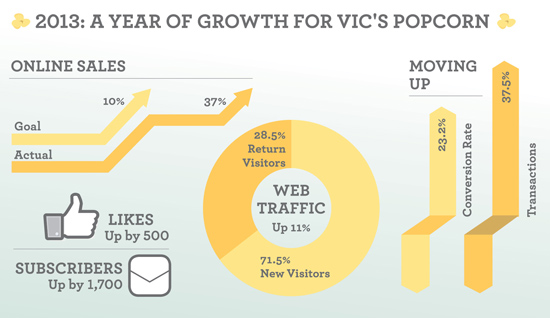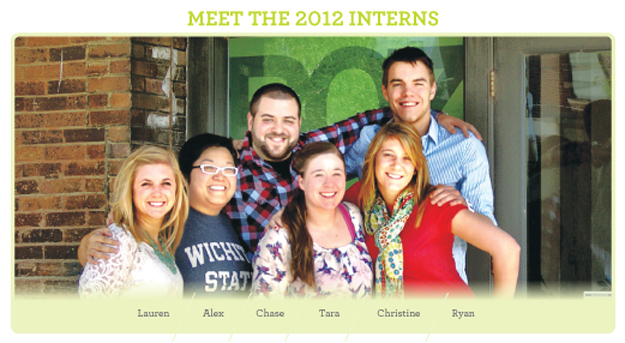April 22nd, 2013
Pop Goes the Web Sales
Increase your online following. Then turn that into increased sales.
On January 2, 1980, Vic Larson opened Vic’s Corn Popper. Since then, his popcorn has grown in popularity and has become a local favorite. He currently owns and operates four store locations and one popcorn plant. He prides himself in the quality of the popcorn he sells, noting that his hybrid corn is grown in Nebraska. In the last few years, he has made it his goal to increase online sales.
Despite a sluggish economy, Vic’s online sales goals for 2012 were fairly aggressive at 10 percent year-over-year growth. Bozell had to find a way to effectively increase sales while keeping costs low. We started by analyzing his 2011 sales and the efforts that were made for that year. In 2011, we saw a small increase in page views and followers on social media. The plan for 2012 was to increase traffic to his website by focusing on his online newsletters and Facebook presence. The next step was to get potential customers to stay on the website and ultimately place an order.
Through a variety of marketing efforts – including online newsletters, Facebook and site updates – we were able to help surpass Vic’s 2012 goals by posting an exceptional sales growth of 37 percent over 2011, which equated to 23.3 percent over established goals for the year. Vic’s main source for promotions came from an online newsletter that customers signed up for through the Vic’s Corn Popper website. In 2011, emails were sent once a month, so, for 2012, we made a promotional calendar that had an email scheduled for every week. His email subscribers increased from 2,237 in 2011 to 3,962 in 2013.
In addition to sending emails, we wanted to utilize his Facebook page and establish it as a source that fans could use if they had questions. We posted weekly specials and increased engagement by posting fun facts, trivia questions and opinion polls. To create a friendly environment that also continued to offer the level of customer service provided in-store, we responded immediately to fan questions, comments and posts. He went from having less than 200 likes in 2011 to now more than 700 likes.
The online newsletter and Facebook page assisted in increasing the number of visits to the Vic’s Corn Popper website, but we needed to transform those numbers into sales. We updated the website to include shipping on all orders. Adjustments were made to the checkout process and store hours were added to the contact page. Our goal was to improve the experience for the user in order to increase the chances of an order being placed. Overall, the traffic to the website increased by 11 percent, which included 71.5 percent new visitors and 28.5 percent returning visitors. This reflected an increase in returning visitor traffic by 6.2 percent over the previous year. With the combined marketing efforts and site updates, the conversion rate increased an average of 23.2 percent while transactions increased 37.5 percent.
With careful planning and strategic thinking, Bozell was able to exceed Vic’s goals for 2012. Needless to say Vic’s next goal is to surpass 2012’s performance. And we are up for the challenge.
April 22nd, 2013
Holiday Results by the Numbers
The shopping and spending trends and conclusions of 2012.
It was an earlier start than usual this holiday season. And there were more shopping days between Thanksgiving and Christmas than last year. So hopes were high. But it turned out to be the imperfect holiday for many retailers. Because, when the fat lady sang, retail sales results were up only three percent compared to 2011, well under the 4.1 percent forecasted by the National Retail Federation. Reflecting a season that was “peak-ed” to say the least.
Retailers at the high end and low end seemed to fare better than those in the middle. Tiffany’s saw four percent tear-over-year growth, Nordstrom’s posted an 8.6 percent growth and TJ Maxx saw six percent growth. All the while, Kohl’s saw only 0.7 percent growth. Overall, electronics, clothing and home goods purchases increased a paltry 0.7 percent, as well. The bright spot in retail was online sales, which were up 14 percent.
But, despite less than stellar numbers, there were some very clear takeaways from the 2012 season.
Sales for November and December account for 20 to 40 percent of U.S. retailers’ annual revenue.
Black Friday isn’t what it used to be.
Though it started Thursday this year, it has become more of a media event and family entertainment activity than a major indicator or driver of the season’s sales.
Leveraging mobile technology can make the experience better, faster and easier – in-store, as well as online.
Macy’s added a GPS tracking system app (in order to help customers make their way around) for its massive Herald Square flagship store in Manhattan. They saw a 19 percent growth in mobile users and refer to the app as a “silent salesperson,” helping customers find products, while interacting with the retailer through the use of digital content.
Target made it easier for parents to shop for their kids, with them in tow, through an app that let them scan a QR code next to the 20 most popular toys, pay on the phone and have them shipped for free.
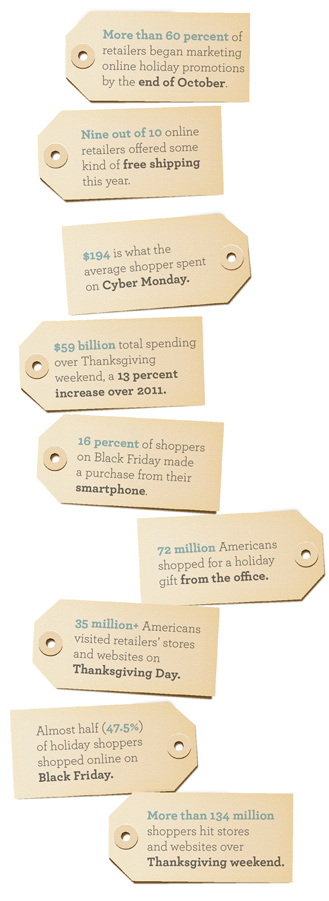 It was more evident than ever this year that mobile technology has changed shopping behavior, well beyond show-rooming. Nearly one in five holiday shoppers played Santa this year through their smartphones or tablets.
It was more evident than ever this year that mobile technology has changed shopping behavior, well beyond show-rooming. Nearly one in five holiday shoppers played Santa this year through their smartphones or tablets.
Omnichannel strategies are becoming a priority.
Retailers who cater to the needs of the stop-start-shopper (those who flip from smartphones to tablets to PCs and move across a number of channels and touchpoints over an undefined period of time before making a purchase), are converting at higher levels, increasing loyalty and growing basket spend.
The fact is, various physical and online eCommerce channels are blending together and online marketing efforts are influencing both in-store and online purchases. So retailers need to focus on the seamless integration of all the different ways they interact with customers – bringing together physical stores, websites, social media, mobile and more.
January 8th, 2013
Bozell and the Pet Industry
Pets are Changing Our Lives.
he pet industry is evolving and, at Bozell, we enjoy every furry, feathery, and scaly moment. Many of us have pets (dogs, cats, bunnies, horses, fish, chickens, at least one donkey and a gecko) and several of us volunteer with local rescue groups. We’re passionate about this industry because it is part of who we are. In addition, our marketing and research expertise continues to help us better understand how to connect with pet owners.
Pet ownership has been growing steadily since 1988, when the American Pet Products Association started counting, and today approximately 62 percent of U.S. households have at least one pet with about $53 billion being spent on pets in 2012. Between 20 and 30 percent of household pets are adopted from shelters or rescues, approximately 26 percent are purchased from a breeder and two to 10 percent are purchased from a pet store. But the majority of pets come into homes for free – or at a very low cost – from friends or family (APPA).
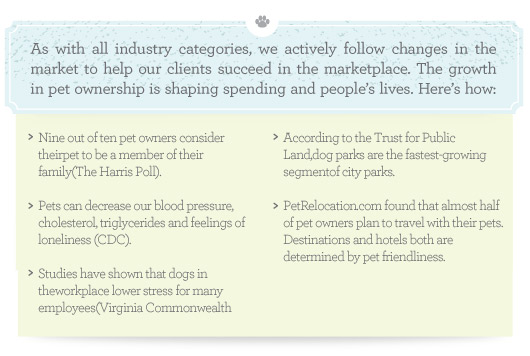
As pets continue to become important family members, the industry is projected to continue its growth as well. We are already seeing changes in communities with more dog-friendly parks and an increase in the number of pet-friendly businesses. Our own personal interests as pet owners impel us to closely follow these changes and our clients benefit from our conviction. But, our marketing expertise helps us successfully connect with this audience in compelling and timely ways.
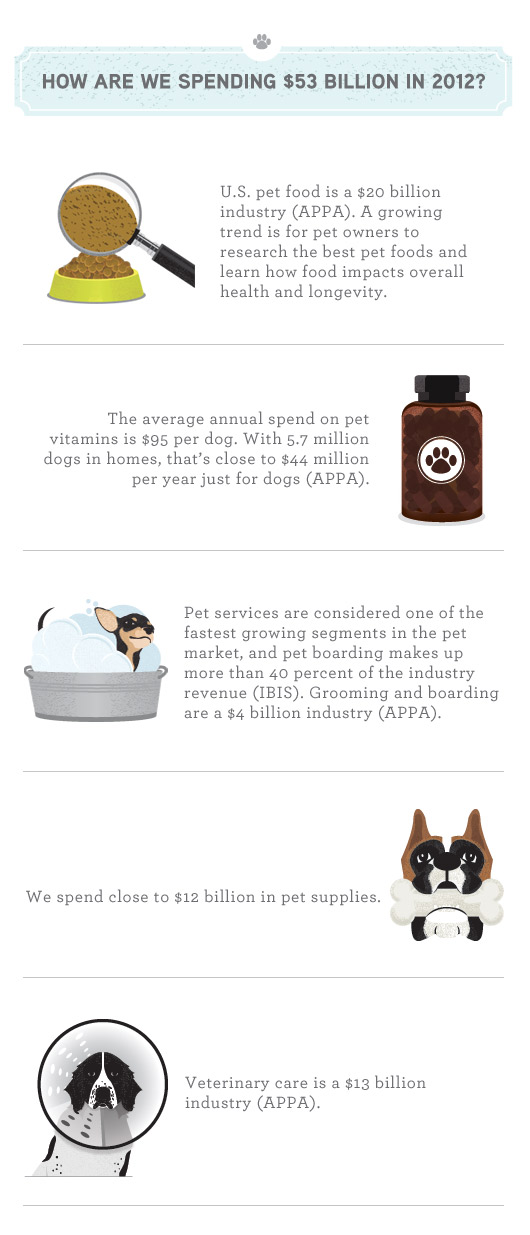
January 8th, 2013
Doing Well by Doing Good
How to incorporate community outreach into your business model.
Consumers are more selective than ever when choosing which companies to buy their products from. And many employees, especially young ones, prioritize social impact and volunteer opportunities in their job search.
“I want to buy from companies that are socially responsible.”
“I want to work at a company that makes the world better.”
So whether at the core of business operations, or at the heart of the brand proposition, “purpose” is motivating, re-inventing and
is even reengineering companies as we know them.
Cause-related marketing programs have been around a long time, and most large companies have implemented a “Cause Program” at some point. But there’s a growing trend that is evident in the legions of companies with a social conscience: occupy a middle ground between a nonprofit and for-profit model.
An example of the emerging convergence of a for-profit business and a nonprofit mission is Tom’s Shoes, founded by Blake Mycoskie in 2006 after befriending children in 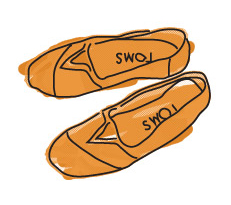 Argentina who had no shoes to protect their feet. Today, for every pair of shoes purchased, Tom’s donates a pair to a child in need. Another example is Warby Parker, founded in 2010. It also uses the “one for one” model, donating a pair of glasses for every pair sold.
Argentina who had no shoes to protect their feet. Today, for every pair of shoes purchased, Tom’s donates a pair to a child in need. Another example is Warby Parker, founded in 2010. It also uses the “one for one” model, donating a pair of glasses for every pair sold.
In October 2012, Ben & Jerry’s, long known for its social conscience, became a certified B Corporation – a new type of corporation that uses the power of business to solve social and environmental problems. Ben & Jerry’s, owned by Unilever, was the first corporate subsidiary of a public company to be named a certified B Corporation. There are some 650 companies thus far that have been certified ever since
B Labs, the non-profit behind the certification, started in 2007.
More than just supplying a sustainable product or service, these B Corporations “create a public benefit” as an integral core of their business plans. To become a B Corporation, a company must change its charter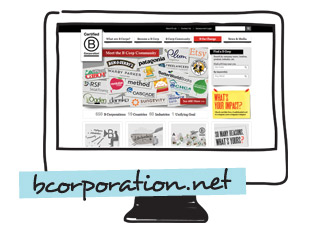 to say that founders, or board members, consider the community, employees and social impact, as well as shareholder profit, when making a business decision. Some notably successful B Corporations include Patagonia, Method, Etsy and RecycleBank.
to say that founders, or board members, consider the community, employees and social impact, as well as shareholder profit, when making a business decision. Some notably successful B Corporations include Patagonia, Method, Etsy and RecycleBank.
You don’t have to be a certified B Corp or a startup to be socially responsible as a company. Here are three quick tips:
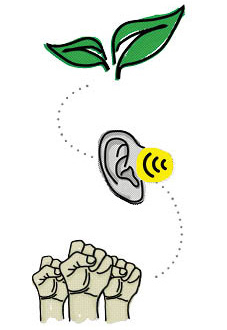
- Do what is natural to your company or brand. The best community initiatives are an extension of what your organization does on a daily basis.
- Always be listening and learning. Monitor and listen to the needs of the communities where you do business, and then determine the most suitable approach to address their social issues.
- Create a culture of doers. Encourage community service among your employees. Many companies give employees time off to work on community projects.
Corporate social responsibility strategies are not only considered “the right thing to do” as a corporate citizen, but will oftentimes positively impact the financial performance of your company and give you a competitive advantage, among many other benefits.
January 8th, 2013
Back to Basics
Exploring the power of K.I.S.S. (Keep It Simple, Stupid).
The term K.I.S.S. may seem abrasive to some, but it holds a lot of truth and should be remembered by all. So often we find ourselves trying to solve a problem by using the most people, the biggest budget, the newest technology. But sometimes a solution to a problem doesn’t have to be difficult and high tech. Sometimes the best solution is right under your nose and so obvious you could kick yourself for trying to go the extravagant route for so long. Let me give you two examples.
Monte Brown, owner of MLB Logistics—a full-service distributor of grocery, tobacco, etc.—has worked for years in warehouses that store perishable products. The problem he faced on a regular basis was product being restocked in front of old product. As you can imagine, the product in the back would go bad and this forced him to throw it away – and profit. He needed a solution to this problem. So Brown invented the world’s first pallet rotating system: HerculEase.
Enter HerculEase.
The concept of HerculEase is quite simple. It looks like a standard pallet, except it is made of heavy-gauge steel and stainless steel bearings. You just set your wooden pallets on top of your HerculEase and, when product starts to empty, simply pull it out, spin it around, push it back in and the older product is now in the front. Brilliant! And, again, so simple.
By focusing on the basics of the problem, Brown was able to create a simple solution to a long-time problem that almost every warehouse faces. Now, while we’re not all inventors, K.I.S.S. still has its place in our everyday environment – particularly the marketing and advertising industry.
Enter Bozell.
When Brown invented HerculEase, it was at the very beginning stages of branding, marketing and advertising. In fact, at that point, the name “HerculEase” didn’t even exist. That was a name that came out of a concepting session where our challenge was to merge the strength of the product with its ingenious ease. And, thus, HerculEase was born.
What came next was figuring out how to best advertise and market the product. The difficulty in this lied in the fact that HerculEase was not only a new product, but rather a new category all together. And how do you best send out a new product into an unknowing market?
We started by creating a demo video that could be shown at tradeshows. This video featured the HerculEase in action, showing potential customers the ease and convenience of the product. We also created a supplemental overview brochure that walked the potential customer through the basics of the product, as well as the features and benefits. In addition to the video and brochure, we created vertical banners that simulated the look and feel of an actual warehouse, so as to better entice immediate sales. Three simple ideas that get the job done (ironically, very much like HerculEase).
Moral of the story, no matter the category, whatever the problem at hand, don’t over think things. Sometimes the best solution is the easiest one.
And sometimes it’s right in front of you. Take the time needed upfront to establish the problem and then find the solution that works best. And remember: never ignore the obvious, because, oftentimes, it’s underrated.
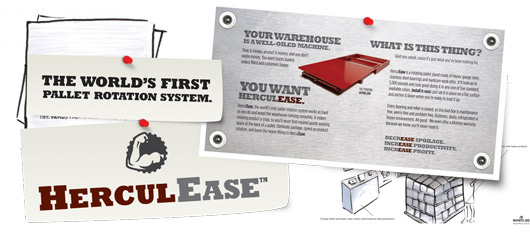
January 8th, 2013
#Election2012
In social media, as in politics, four years is an eternity.
In November 2008, about 37 percent of Americans said they’d used a social networking site. In 2012, about two-thirds of people were socially engaged during the elections.
In fact, this year a post on social media became the new “I voted” sticker. More than 1 in 5 registered voters shared, or planned to share, their votes with social media pals, according to Pew Internet & American Life Project. Few Americans really keep their choices to themselves.
Election Day 2012 set records on every social media front and was Twitter’s biggest political event ever. As TV networks called the race, second screens lit up at a rate of more than 327,000 tweets per minute with more than 31 million tweets in 24 hours.
On Facebook, the top terms on Tuesday morning and afternoon were variations of “vote,” “voted,” and “go vote.”
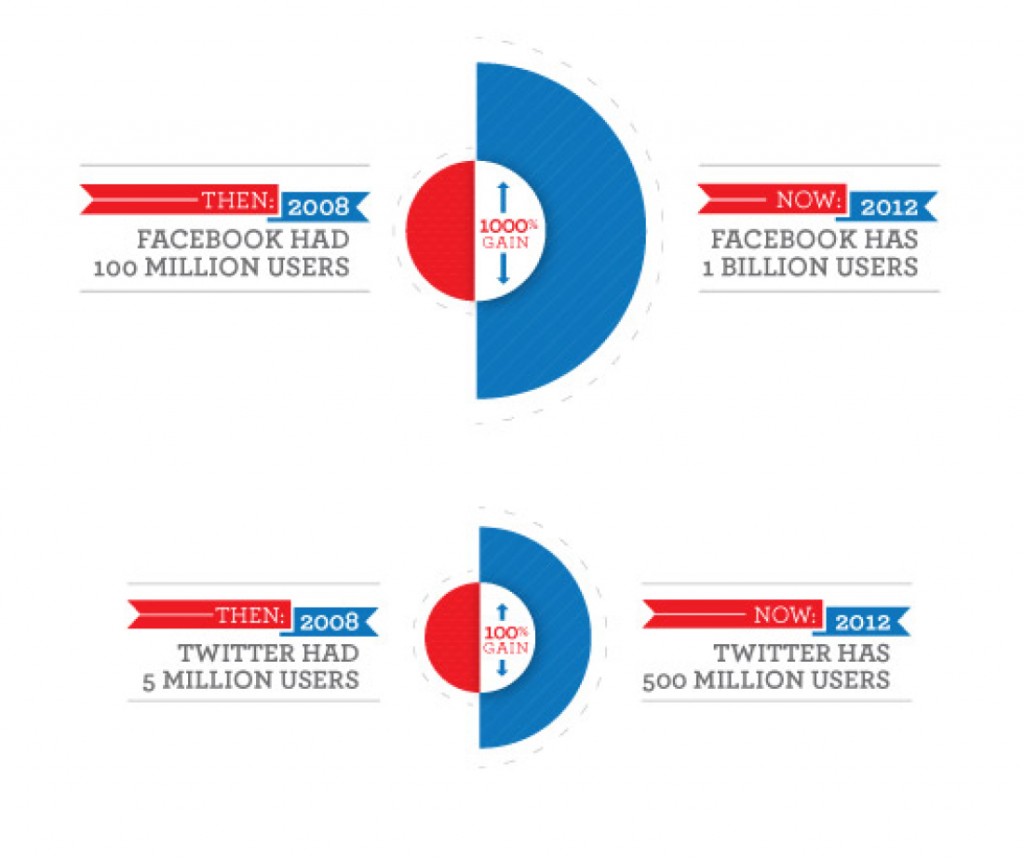
Partisan tension was evident as many social media users drew their own lines in the sand and made their own views loudly known. The barrage of political status updates, tweets, rants, cartoons, pictures, retweets and videos come at a cost: online “friends.” And for a few, there may be even bigger repercussions.
22-year-old California woman, Denise Helms, was criticized for her racism and assassination tweet. She was fired from her job and the Secret Service is looking into it. (http://mashable.com/2012/11/10/racist-threat-obama/)
Almost 500,000 people have added their names to an online petition urging Macy’s to end its partnership with Donald Trump following his election night tweets. (http://www.businessweek.com/news/2012-11-13/macy-s-urged-to-dump-trump-goods-after-anti-obama-statements)
One of the more entertaining aspects of this election were the memes. They came fast and furious. And each new one gave supporters a rally cry to share with their friends. Did memes that were so popular on social media sway how people voted? Maybe. Maybe not. But they certainly did fire up the candidates’ supporters.
Social media is still a bit of a novelty, so whenever there is big news, mainstream media covers how the event plays out in social media. That has never been more evident than this election year. By November 7, there were hundreds of stories covering details such as tweets per minute, Facebook traffic and memes traction.
But I think Paul Sloan hit the nail on the head in his story (http://news.cnet.com/8301-1023_3-57545544-93/mark-2012-as-historys-last-social-media-election/)
“This seeming fascination with all things social as something separate, even novel, maybe a fleeting phenomenon, as 2012 could be a turning point of sorts – the last U.S. presidential election in which the media pore over every detail about what’s going on with social media. Why? At some point, it’s simply no longer surprising. It just…is.”
#truth
What will 2016 bring? Only time will tell.
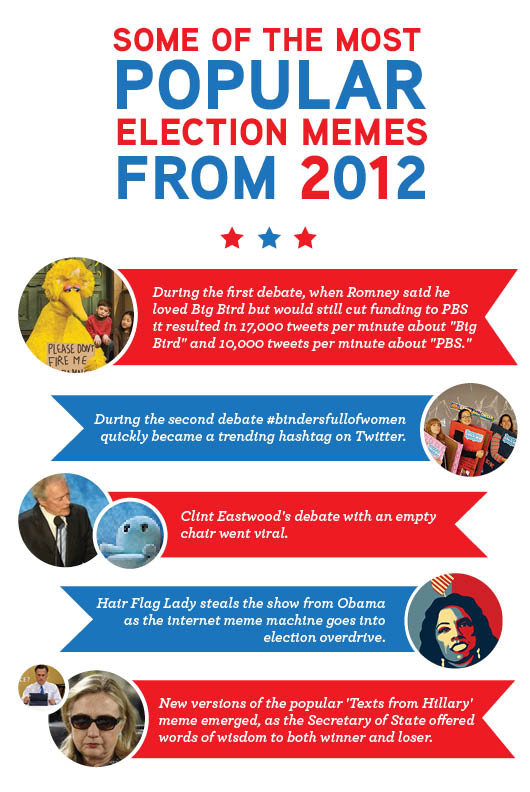
January 7th, 2013
So You Think You Want an App?
The pros and cons of mobile applications.
It’s no secret that the mobile market is huge, with more than 50 percent of U.S. consumers currently owning a smartphone. The market is only set to get hotter, with a projected annual growth rate of 20 percent through 2015. In spite of the incredible size and variety of devices on the market, the single most popular phone is undoubtedly the iPhone. Even though the iPhone only accounts for about a third of smartphones in use, it is the unofficial poster child of smartphones and their success. And, having an app in Apple’s App Store has now become the chic tech trend du jour.
Apps like Angry Birds—which has gone from a casual game to a household name—and Instagram—the photo-sharing app bought by Facebook for one billion dollars—help create the sense of opportunity that I can only imagine people felt during the Klondike Gold Rush. But there is a common misconception that, if one gets an app in the App Store, success will come. Unfortunately, the App Store mirrors the gold rush in its initial sensationalism, as well as its eventual reality. During the gold rush, 100,000 people set out in search of riches, but only 4,000 found gold. For the Apple App Store, more than 100,000 publishers have set off in search of their riches and, correspondingly, few have found it.
According to research performed by Dave Addey on paid apps, the top percent of successful apps takes a lion’s share 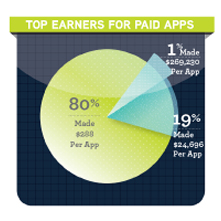 of revenue from the store (36 percent or $269,230 per app). The next 19 percent of apps are getting an average of $24,696 per app. Finally, the remaining 80 percent of app owners have made an average of $288 over the lifetime of their app. Regarding the one percent, Dave goes on to say “this top end of the store is no longer a market that’s available to small independent developers.”
of revenue from the store (36 percent or $269,230 per app). The next 19 percent of apps are getting an average of $24,696 per app. Finally, the remaining 80 percent of app owners have made an average of $288 over the lifetime of their app. Regarding the one percent, Dave goes on to say “this top end of the store is no longer a market that’s available to small independent developers.”
It’s pretty hard to make money on an app, and producing an app can be very expensive. Depending on the complexity of the app, you will be looking at anywhere between four-figure quotes from freelancers to five-figures and above quotes from professional development shops or agencies. The App Store is maturing and users’ quality standards have been increasing with their exposure to professional quality apps, so think twice before trying to skimp on development costs. Having an unpolished app can be worse than having no app at all.
On top of the financial challenges, it can be pretty hard to even have your app viewed in the App Store. There are more than 700,000 apps available, and more than 800 new apps are being released daily. With discoverability in the App Store being incredibly challenging, and the possibility of being featured by Apple being highly unlikely, to get an app noticed you have to turn to other methods on the internet. Lucky Frame’s Yann Seznec put it very well when he said “the secret to getting lots of coverage … is just hard work.” Traditional online advertising is a popular, but also potentially expensive option. Another route would be offering bloggers in your niche access to pre-release versions of your app to review. Either way, time and money will need to be spent to get your app noticed.
The App Store is an excellent way to connect with users and provide compelling experiences, but, as we have learned, it is not without its challenges. Temper your expectations and think about why you want an app. If direct sales revenue is your goal, then you need to be prepared for a significant ongoing commitment. If you are simply looking to expand your presence to the mobile sphere, consider if your idea can be accomplished as a mobile Web app. Many of the same things can be accomplished on a mobile site, and, depending on your needs, this might actually be a better fit. With a mobile website, you can leverage your existing online presence and also be accessible by all mobile users (contrast this with needing a separate app for each major mobile platform). An experienced vendor should be able to help you weigh the pros and cons of each approach if you are unsure. Regardless of the route you choose, be sure to develop a long-term marketing strategy for your new mobile presence. The mobile world is very crowded and you will need more than just a
great idea to get noticed.
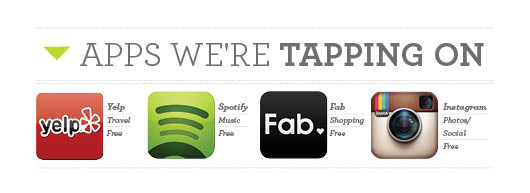
October 12th, 2012
90 Days of Everyday Intern Heroes
What we accomplished during our summer internship at Bozell.
This summer, we, the Bozell interns, worked with the Assistance League of Omaha. It is a local chapter of the national Assistance League and has been helping improve the lives of local people since 1972.
The amazing team of volunteers is dedicated to the needs of their neighbors. Whether the volunteer members are clothing schoolchildren, providing comfort to those in crisis situations or helping teen parents graduate, they are always looking to make an impact where it really matters – right here in Omaha.
It was the effective teamwork and inspiring passion of the Assistance League members that caused us to think of another team of heroic volunteers: the Justice League, a superhero comic book team. With this newfound inspiration, we formed our own superhero team in order to create an original and extraordinary campaign of “Everyday Heroes.”
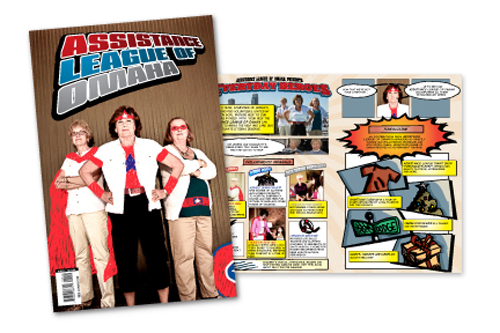
Bringing Everyday Heroes to life
One important lesson you learn in advertising is to know your client. And, knowing the professionalism of the Assistance League, we recognized that dressing up the volunteers in spandex, leotards and underwear on the outside of their clothing was not the way to communicate a superhero theme. So we did something a little different.
For all the visuals of the campaign, we featured photos of actual Assistance League volunteers performing the heroic tasks that they do every day, like counseling a young mother or giving teddy bears to children experiencing a crisis. And, instead of dressing up the volunteers in costumes, we chose to hand draw superhero elements (e.g., capes, gloves, masks) over the photos. Using this strategy, we were able to show that, while these volunteers aren’t faster than a speeding bullet, what they do is more important, as their deeds provide real solutions for the community.
The Everyday Heroes campaign consists of a poster campaign, outdoor ads, radio public service announcements, social media and a new brochure for the organization.
Real Client, Real Agency Experience
One of the biggest lessons we learned as interns was that a great, complete campaign like Everyday Heroes does not simply come together on its own. It takes a process. This process included initial meetings with the client, researching and strategizing, writing briefs, presenting concepts and executing a creative vision. This intern project consisted of a lot of behind-the-scenes work and planning to make an idea a reality. With essential help and guidance from various Bozell employees, the interns were able to accomplish a working campaign and learn quite a few lessons along the way.

